Iran Birdwatching Itinerary
Iran, with its diverse landscapes ranging from deserts and mountains to wetlands and coastlines, offers a remarkable array of bird species. This birdwatching tour will take you across the country, visiting the most renowned bird habitats to experience the richness of Iran’s birdlife.
Day 1: Arrival in Tehran
-
Arrival at Tehran International Airport.
-
Transfer to your hotel and enjoy a restful night.
-
Evening: Optional visit to a local park for a quick birdwatching session, with possible sightings of Eurasian magpies and other common urban species.
Day 2: Alborz Mountains – Tehran’s Northern Edge
-
Morning: Departure to the Alborz Mountains, just north of Tehran.
-
Explore high-altitude forests and rocky terrains.
-
Target species include Eurasian eagle-owl, wallcreeper, and red-fronted serin.
-
-
Afternoon: Birdwatching in the Caspian Hyrcanian mixed forests.
-
Spot species such as the Persian wheatear, woodpeckers, and various passerines.
-
-
Evening: Return to Tehran for overnight stay.
Day 3: Varzaneh Desert – Eastern Iran
-
Morning: Early departure to Varzaneh Desert, located south of Isfahan.
-
Observe desert species including sandgrouse, kestrels, and hoopoe larks.
-
Look for migratory species passing through the region.
-
-
Afternoon: Visit nearby salt flats and wetlands, where you can find the common crane, flamingos, and other waterfowl.
-
Evening: Overnight stay in Isfahan.
Day 4: Isfahan – Wetlands and Rivers
-
Morning: Visit the Zayanderud River and its surrounding wetlands, an excellent habitat for a variety of waterfowl, including swans, ducks, and herons.
-
Spot species like the common pochard, white storks, and various shorebirds.
-
-
Afternoon: Explore the outskirts of Isfahan, looking for the rare white-tailed eagle and other raptors.
-
Evening: Free time to explore Isfahan's historical sites and culture. Overnight in Isfahan.
Day 5: Khuzestan Wetlands – Southwest Iran
-
Morning: Travel to Khuzestan province, an important stop for migratory birds, particularly in the winter months.
-
Visit Hoor al-Azim Wetland and Shadegan Marsh, known for pelicans, flamingos, and herons.
-
-
Afternoon: Explore other wetland areas where you can observe a wide variety of species, including the endangered Dalmatian pelican.
-
Evening: Overnight in Ahvaz or a nearby town.
Day 6: Caspian Sea Coast – Northern Iran
-
Morning: Head to the Caspian Sea Coast for a day of birdwatching along the wetlands.
-
Spot species like the Eurasian spoonbill, red-necked grebe, and various waders.
-
-
Afternoon: Explore the Golestan National Park, which hosts a wide range of birds, including golden eagles, northern goshawks, and Persian partridges.
-
Evening: Overnight in Gorgan or a nearby city.
Day 7: Hormoz Island – Persian Gulf
-
Morning: Fly from Gorgan to Hormoz Island in the Persian Gulf, a coastal haven for birdwatchers.
-
Look for osprey, seabirds, and shorebirds in the coastal habitats.
-
You may also spot migrant species stopping in this coastal area.
-
-
Afternoon: Visit Hara Forests for birdwatching, where you might find species such as the Indian roller and various kingfishers.
-
Evening: Stay overnight on Hormoz Island.
Day 8: Lut Desert – Southeastern Iran
-
Morning: Travel to the Lut Desert, one of the driest places on earth, to witness the stark desert landscape.
-
This area offers sightings of desert-adapted birds like the desert sparrow, larks, and falcons.
-
-
Afternoon: Explore more remote desert regions, where migrating species often stop near rare water sources.
-
Evening: Return to Tehran for the night.
Day 9: Departure from Tehran
-
Morning: Free time for last-minute birdwatching in Tehran or shopping for souvenirs.
-
Afternoon: Transfer to Tehran International Airport for departure.
Key Species to Expect
-
Raptors: Golden eagle, Persian eagle, goshawks
-
Waterfowl: Flamingos, Dalmatian pelican, common crane
-
Passerines: Eurasian magpie, Persian wheatear, wallcreeper
-
Shorebirds: Common sandpiper, Eurasian spoonbill, red-necked grebe
-
Desert species: Hoopoe larks, desert sparrow, sandgrouse
Best Time to Visit
-
Spring (April to June) and Autumn (September to November) are ideal for birdwatching in Iran, with migration routes bringing a variety of species.
This tour offers an extensive journey through Iran’s diverse ecosystems, showcasing the country’s impressive birdlife in some of the most unique and remote regions.






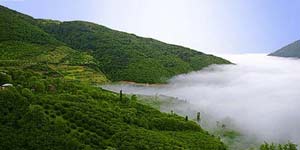

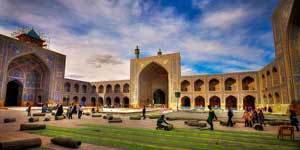
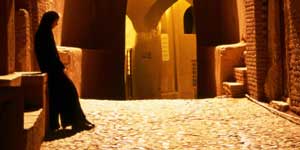
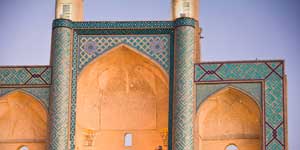
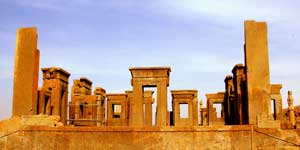
 > Shiraz >
> Shiraz >  > Isfahan
> Isfahan












